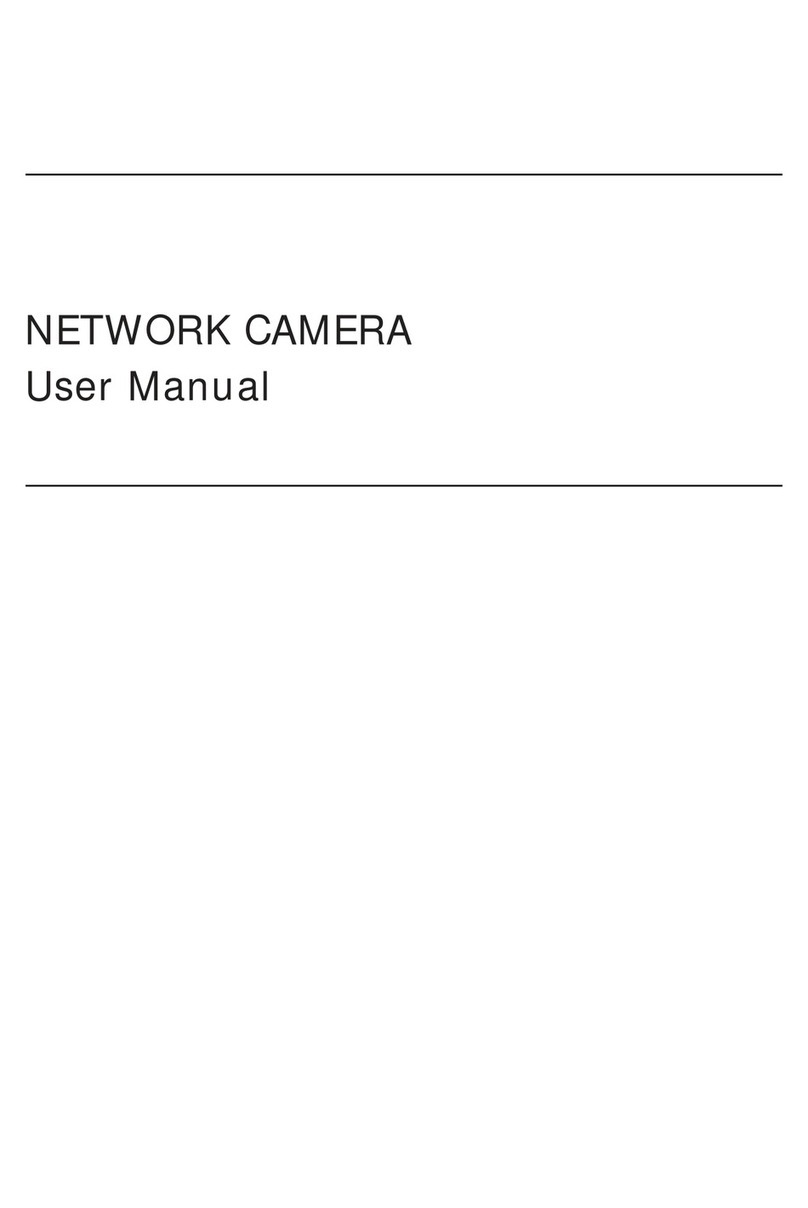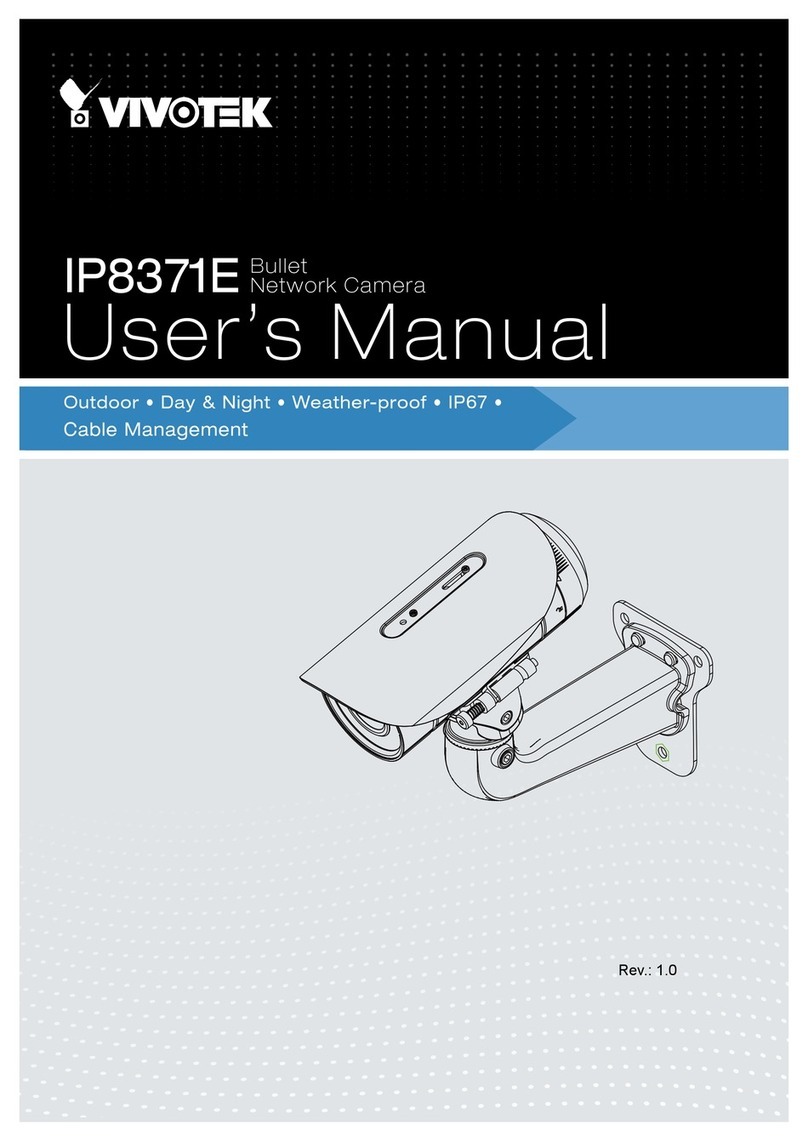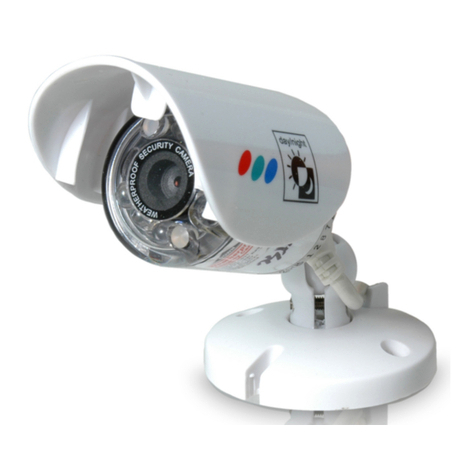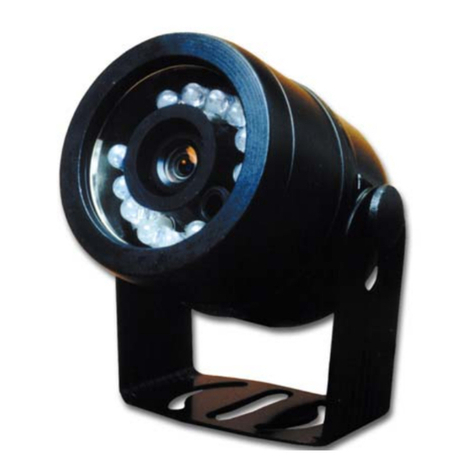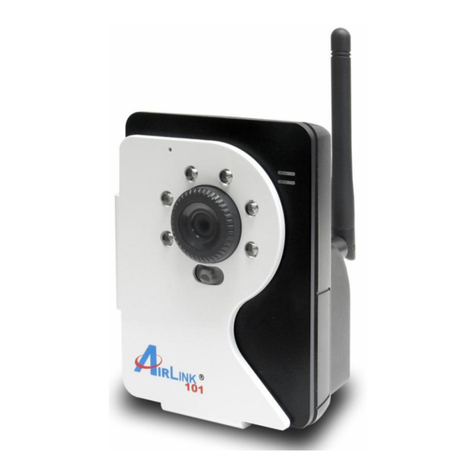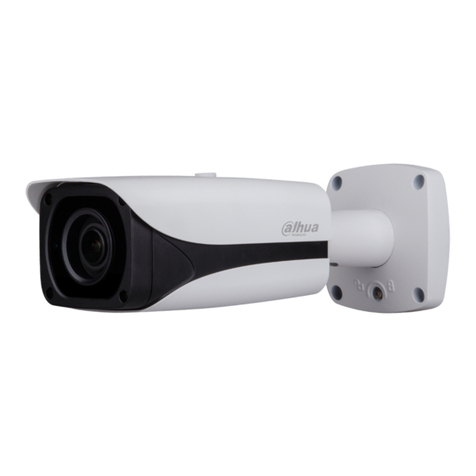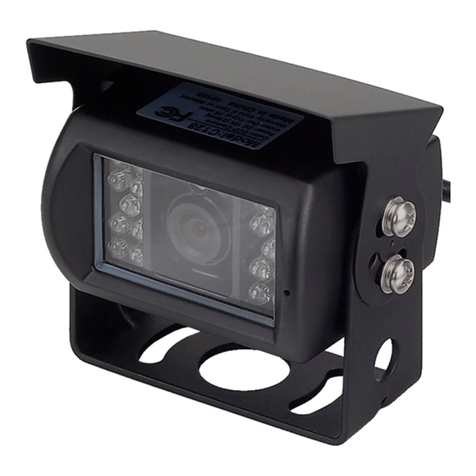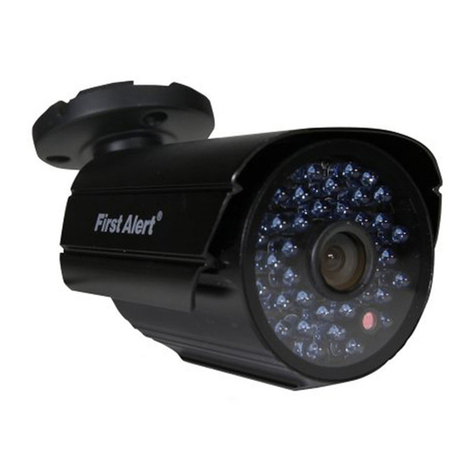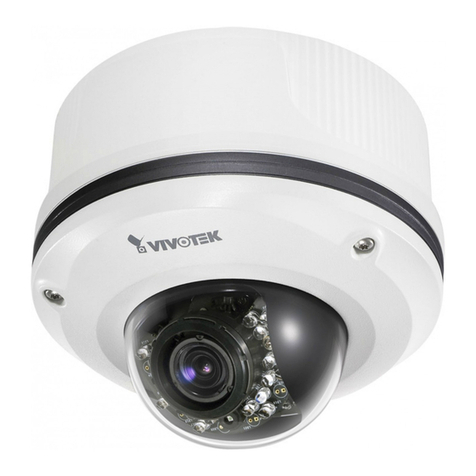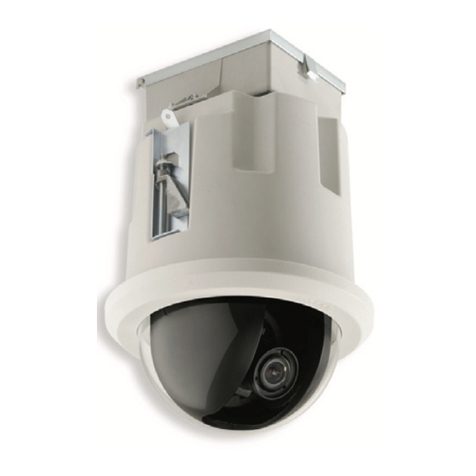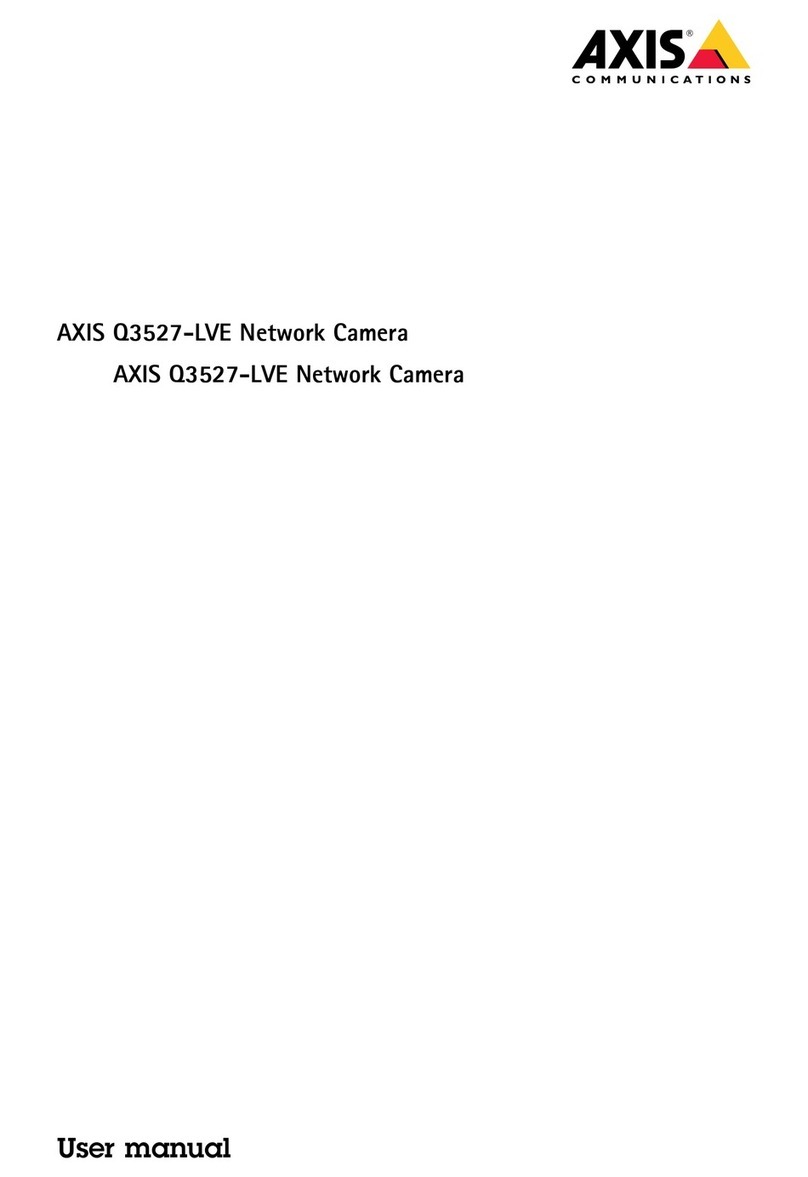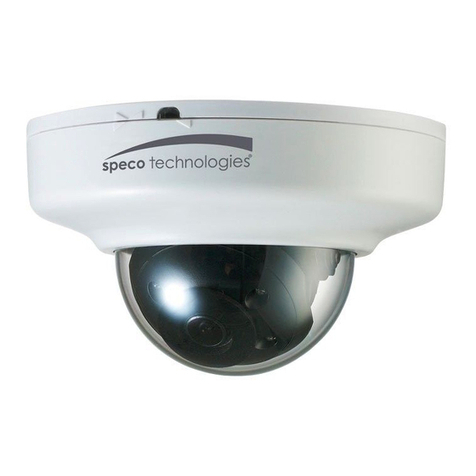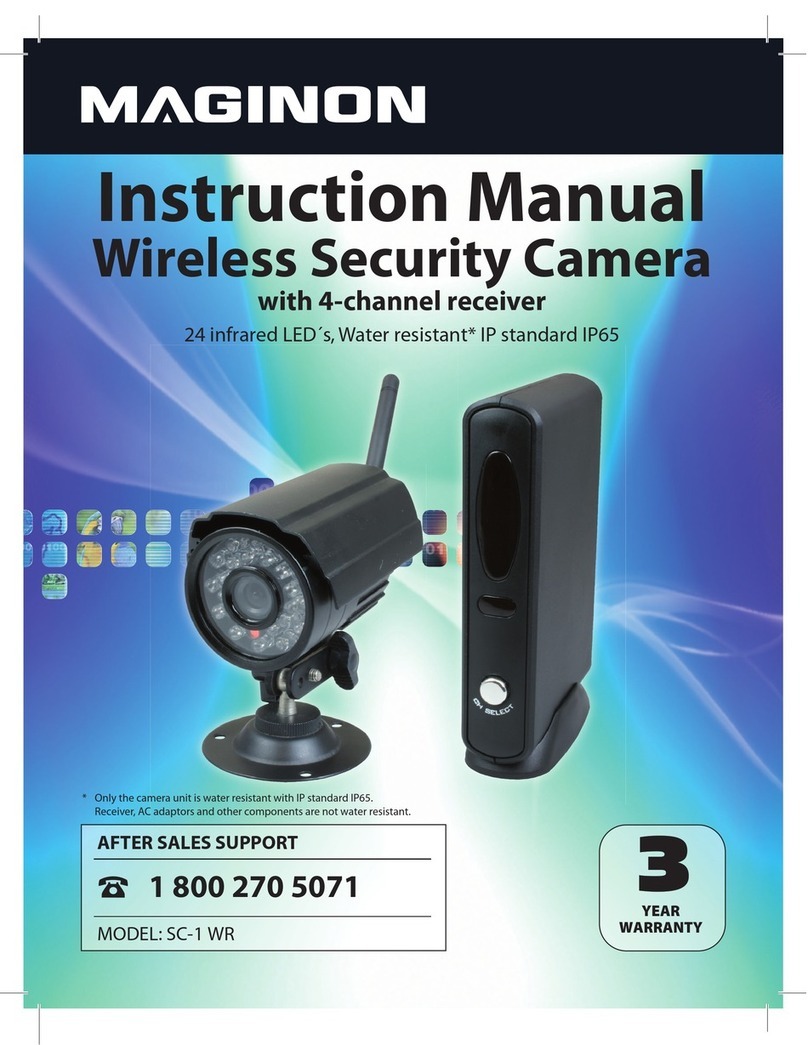Adimec Quartz Q-12A180F User manual

OPERATING AND USER MANUAL
________________________________________________________________________________________________________________
Operating and user manual
Q-12A180F
rev0.1

OPERATING AND USER MANUAL Q-12A180F
________________________________________________________________________________________________________________
_________________________________________________________________________________________
Adimec 2
ABOUT ADIMEC
Adimec is the leading supplier of high-performance digital camera modules and camera-lens assemblies for use
in three market segments: machine vision, medical imaging, and applications for government purposes such as
traffic and defense systems. In developing our products as a partner to major OEMs around the world, we utilize
the synergy between these segments to shine in terms of image quality, speed, dynamic range and reliability.
Adimec is the only company in the market that weds the specific needs of its highly demanding customers to its
technological inventiveness, generating vision solutions of exceptional quality. These industry-leading customer
specials are the models for our standard products.
Thanks to this unique approach, Adimec’s solutions add crucial competitive value to our customers’ high-end
systems and their applications, as they yield brilliant results to the users of those systems.
The Netherlands-based holding company has business offices in Europe, the United States, Japan, and
Singapore. For more detailed information about Adimec and our products you can visit our website
www.adimec.com or you can contact your local dealer or the business offices in your region:
- Adimec Advanced Image Systems B.V.
PO Box 79095605 SH Eindhoven
The Netherlands
Phone: +31 (40) 2353 920
Fax: +31 (40) 2353 905
E-mail: SalesEU@adimec.com
- Adimec Japan
2-10-3-103, Narimasu, Itabashi-Ku
175-0094 Tokyo
Japan
Phone: +81 (3) 5968 8377
Fax: +81 (3) 5968 8388
E-mail: SalesJP@adimec.com
- Adimec Electronic Imaging Inc.
PO Box 80529Stoneham, MA 02180
USA
Phone: +1 (781) 279 0770
Fax: +1 (781) 279 0571
E-mail: SalesUS@adimec.com
- Adimec Asia/Pacific
228 Changi Road, #03-07 ICON @ Changi
Singapore 419741
Phone: +65 6334 1236
Fax: +65 6334 1436
E-mail: SalesAP@adimec.com

OPERATING AND USER MANUAL Q-12A180F
________________________________________________________________________________________________________________
_________________________________________________________________________________________
Adimec 3
Table of Contents
ABOUT ADIMEC .............................................................................................................................................. 2
!
1
!
GENERAL INTRODUCTION ...................................................................................................................... 5
!
1.1
!
PRODUCT
HIGHLIGHT .............................................................................................................. 5
!
1.2
!
A
BOUT THIS MANUAL
..................................................................................................................... 5
!
1.3
!
S
TANDARDS
................................................................................................................................. 5
!
1.4
!
L
IABILITY
...................................................................................................................................... 6
!
2
!
PRECAUTIONS ......................................................................................................................................... 7
!
2.1
!
S
AFETY PRECAUTIONS
................................................................................................................... 7
!
2.1.1
!
General ....................................................................................................................... 7
!
2.1.2
!
CE symbol................................................................................................................... 7
!
2.2
!
H
ANDLING
.................................................................................................................................... 7
!
2.2.1
!
General ....................................................................................................................... 7
!
2.2.2
!
Cleaning of the CMOS sensor ..................................................................................... 7
!
2.2.3
!
Cleaning of the camera ............................................................................................... 9
!
2.2.4
!
Maintenance ............................................................................................................... 9
!
2.2.5
!
Repair and modification............................................................................................... 9
!
2.2.6
!
Mounting / Mechanical................................................................................................. 9
!
3
!
INSTALLATION HARDWARE.................................................................................................................. 10
!
3.1
!
C
ONNECTOR OVERVIEW
............................................................................................................... 10
!
3.2
!
E
LECTRICAL INTERFACE
-
C
OA
XP
RESS
......................................................................................... 10
!
3.2.1
!
Power........................................................................................................................ 11
!
3.2.2
!
Video, control and trigger........................................................................................... 11
!
3.2.3
!
Adimec Service Port.................................................................................................. 11
!
3.3
!
E
LECTRICAL INTERFACE
–
STROBE AND TRIGGER
............................................................................ 11
!
3.4
!
LED
INDICATORS
........................................................................................................................ 13
!
3.5
!
Q
UICK START
.............................................................................................................................. 13
!
4
!
FUNCTIONAL DESCRIPTION ................................................................................................................. 14
!
4.1
!
B
LOCK DIAGRAM
......................................................................................................................... 14
!
5
!
CONTROL OF THE CAMERA.................................................................................................................. 16
!
5.1
!
I
NTRODUCTION
C
OA
XP
RESS AND
G
EN
IC
AM
.................................................................................. 16
!
5.2
!
S
TRUCTURE OF CAMERA CONTROL
................................................................................................ 17
!
5.2.1
!
Register name........................................................................................................... 17
!
5.2.2
!
Register address ....................................................................................................... 17
!
5.2.3
!
Register size ............................................................................................................. 17
!
5.2.4
!
Register interface ...................................................................................................... 17
!
5.2.5
!
Parameter access ..................................................................................................... 17
!
5.2.6
!
Parameter visibility .................................................................................................... 18
!
5.2.7
!
Parameter default and range ..................................................................................... 18
!
5.2.8
!
Bootstrap CoaXPress registers.................................................................................. 19
!
5.2.9
!
Device control registers ............................................................................................. 20
!
5.2.10
!
Image format control registers ................................................................................... 21
!
5.2.11
!
Acquisition control ..................................................................................................... 24
!
5.2.12
!
Counter and timer control .......................................................................................... 26
!
5.2.13
!
HDR: High Dynamic Range ....................................................................................... 26
!
5.2.14
!
Analog control ........................................................................................................... 29
!
5.2.15
!
Sensor ...................................................................................................................... 30
!
5.2.16
!
Factory...................................................................................................................... 31
!
5.2.17
!
LUT Control............................................................................................................... 31
!
5.2.18
!
Transport layer control............................................................................................... 32
!
5.2.19
!
Defect pixel ............................................................................................................... 32
!

OPERATING AND USER MANUAL Q-12A180F
________________________________________________________________________________________________________________
_________________________________________________________________________________________
Adimec 4
5.2.20
!
Dark field................................................................................................................... 34
!
5.2.21
!
Bright field ................................................................................................................. 35
!
5.2.22
!
User set control ......................................................................................................... 36
!

OPERATING AND USER MANUAL Q-12A180F
________________________________________________________________________________________________________________
_________________________________________________________________________________________
Adimec 5
1 GENERAL INTRODUCTION
The Quartz CMOS camera described in this manual provide 12Mp resolution through
CoaXPress interface. All have in common a global shutter operation, CCD like image quality and
reliability. Unlike competitors who are offering general purpose cameras, our products are developed
with the specific needs of OEMs and their applications in mind.
1.1 PRODUCT HIGHLIGHT
•12Megapixelupto187fps
•TrueGlobalShutterCMOS
•FPNandADCColumncalibrations
•Configurable1,2or4laneCXP3-6interface.
•M12I/Oconnectoroptional
•CoaXPressV1.1compliant
•CoaXPressV1.0compatible
1.2 About this manual
This manual describes the Q-12A180F camera.
All specifications in this document apply to the products listed above unless stated otherwise.
Unless stated differently, all information in this manual is applicable to all camera versions.
In this manual we use the following standard symbols in the left margin to draw your attention:
NOTE: Practical tip or note
1.3 Standards
•CoaXPressStandardVersion1.1–JIIACXP-001-2013
•CoaXPressStandardVersion1.0–JIIACXP-001-2010
•GenICamV2.3.1
•SFNCV2.0

OPERATING AND USER MANUAL Q-12A180F
________________________________________________________________________________________________________________
_________________________________________________________________________________________
Adimec 6
1.4 Liability
Adimec puts in a lot of effort in preparing this manual. Please inform your Adimec Business Office of any
inaccuracies or omissions. Adimec Advanced Image Systems B.V. cannot be held responsible for any technical
or typographical errors and reserves the right to make changes to the product and manuals without prior notice.
Adimec Advanced Image Systems B.V. makes no warranty of any kind with regard to the material contained
within this document, including, but not limited to, the implied warranties of merchantability and fitness for a
particular purpose. Adimec Advanced Image Systems B.V. shall not be liable or responsible for incidental or
consequential damages in connection with the furnishing, performance or use of this material.
Layout, composing and editorial staff: Adimec Advanced Image Systems B.V.
Illustrations: Adimec Advanced Image Systems B.V.
All rights reserved. No part of this document may be reproduced, stored in a database or retrieval system, or
published in any other form or way, electronically, mechanically, by print, photo print, microfilm or any other
means without prior written permission from the publisher.
All correspondence regarding copyrights, translations:
Adimec Advanced Image Systems B.V.
PO Box 7909 Luchthavenweg 91
5605 SH Eindhoven 5657 EA Eindhoven
The Netherlands The Netherlands
Tel: +31 (40) 2353920
Fax: +31 (40) 2353905
URL: www.adimec.com
Publication number: 187331
© Copyright 2014 Adimec Advanced Image Systems B.V. Eindhoven, The Netherlands.

OPERATING AND USER MANUAL Q-12A180F
________________________________________________________________________________________________________________
_________________________________________________________________________________________
Adimec 7
2 PRECAUTIONS
NOTE: It is advised to include the text of this chapter in the assembly documents of the system in
which the camera is used.
A CMOS sensor camera is a sensitive device. Please read the following precautions carefully before
you continue unpacking or operating the camera.
2.1 Safety precautions
2.1.1 General
It is advised to unpack and handle the camera in a clean, ESD protected working area.
It is advised to read the whole manual before using the camera.
2.1.2 CE symbol
The following symbol for “Conformité Européenne” is applicable to and indicated on the camera.
2.2 Handling
2.2.1 General
In order to prevent damage to the camera and to keep the CMOS sensor clean, please take the
following precautions.
•Alwayskeepthesensorcapinplaceaslongasnolens is attached.
•Removethelenscapjustbeforethelensisscrewed on the camera. It is advised to perform this
operation in a clean room or clean bench.
•NevertouchtheCMOSsensorsurface.Thecoverglass is easily damaged and the CMOS sensor can
be damaged by ESD (electrostatic discharge).
2.2.2 Cleaning of the CMOS sensor
Cleaning of a CMOS sensor is a rather difficult task. Depending on the aperture of the lens used, any
dust particles with a size of 10 µm and larger can show up in your image.
All cameras are checked for cleanliness in our factory before shipment. Proper handling instructions
during system assembly can prevent the CMOS sensor from getting contaminated.
Should cleaning of the CMOS sensor be necessary follow the instruction below.
NOTE: that damage of the CMOS sensor due to scratches on the cover glass or electrostatic
discharge (ESD) is not covered by warranty!
The correct working environment for cleaning is essential in order to ease cleaning and to prevent
damage of the CMOS sensor.

OPERATING AND USER MANUAL Q-12A180F
________________________________________________________________________________________________________________
_________________________________________________________________________________________
Adimec 8
Precautions:
•TakeprecautionstopreventESDthatcandamagethe CMOS sensor.
•CleaningoftheCMOSsensor,andassemblyofthelens is preferably performed in a clean room or
clean bench.
•NevertrytocleantheCMOSsensoratarelativehumidity lower than 30%. A relative humidity of 40% or
higher is preferred in order to minimize the chance of damage due to ESD.
•Itisadvisabletouseanionizer,inordertominimize the built-up of ESD.
•Besuretocleanthelensmountofthelensbeforeassembly.
•Usenon-fluffingQ-tipsandAlcohol(orHexane)for cleaning. De-ionized water may be necessary to
remove ionic contaminants like salts.
•AnyQ-tipshouldbeusedonlyonce-youwillotherwise move dirt from one place to another.
•Neverdryrubthewindow.Thismaycausestaticcharges or scratches that can destroy the CMOS
sensor.
Cleaning instructions:
1. First try to remove the contamination by using clean, dry air. (Use an ultra-filtered, non-residue dust
remover spray). Avoid blowing air into the screw thread of the lensmount, because this may cause
contamination on the CMOS sensor due to loose particles and traces of oil or grease.
If this step does not result in an acceptable result, continue with step 2.
2. Remove the lensmount by unscrewing the 4 screws (m3x6 screws; torx10) that hold the lensmount (see
figure 2.1).
Figure 2-1: Lensmount fixation points
3. Clean the CMOS sensor cover glass using Alcohol or Hexane and a Q-tip.
Gently and carefully rub the window always in the same direction, e.g. top to down.
4. Install the lensmount back on the camera front.
Maximum tightening force may not exceed 0.6 Nm.

OPERATING AND USER MANUAL Q-12A180F
________________________________________________________________________________________________________________
_________________________________________________________________________________________
Adimec 9
5. Install a lens, power up the camera, set the lens at a small aperture (F16) and point the lens at a bright
source. Adjust gain and integration time if necessary.
6. Check the image on the monitor for dark spots and stripes caused by contamination on the CMOS
sensor cover glass. (Note that the image on the monitor should not saturate due to over exposure - if
necessary close the iris even further).
7. If the CMOS sensor is not clean, repeat steps 4 - 7 using a new Q-tip. After three unsuccessful tries, it is
advised to wait a few minutes before a new attempt is made to clean the CMOS sensor.(The waiting
time allows the electric charge that has been built up during cleaning to neutralize).
2.2.3 Cleaning of the camera
The camera shall NEVER be immersed in water or any other fluid. For cleaning, only use a light moist
tissue.
2.2.4 Maintenance
No specific maintenance other than cleaning is applicable.
2.2.5 Repair and modification
Repair, modification and replacement of parts shall be done only by Adimec to maintain compliance
with the directive 89/336/EEC electromagnetic compatibility and directive 72/23/EEC low voltage
directive and the international standards.
2.2.6 Mounting / Mechanical
Connectors
Take care during handling of the camera. Connectors should not be damaged.
Prevent the entry of foreign objects or dirt into the connectors, as this will result in unreliable operation
or damage.
Mounting screws
Take notice of the maximum length of the screws that may be used for mounting of camera. Using screws too
long can cause damage to the camera. M4 screws should be used with a maximum screw depth of 5 mm. The
recommended tightening torque is 108 cNm.

OPERATING AND USER MANUAL Q-12A180F
________________________________________________________________________________________________________________
_________________________________________________________________________________________
Adimec 10
3 INSTALLATION HARDWARE
In this chapter the electrical interfaces as well as the mechanical and optical interface are described. If a lens,
cabling and frame grabber is available and installed, one may refer directly to the quick start section at the end
of this chapter. The other sections describe the interfaces in detail.
3.1 Connector overview
Figure 3-1: Camera back overview
Connector
number
Connector type Description Mating connector
1 DIN 1.0/2.3 CXP connection 0 (Master connection) DIN 1.0/2.3
1
2 DIN 1.0/2.3 CXP connection 1 (Extension, Dual)
2
DIN 1.0/2.3
1
3 DIN 1.0/2.3 CXP connection 2 (Extension, Quad)
3
DIN 1.0/2.3
1
4 DIN 1.0/2.3 CXP connection 3 (Extension, Quad)
3
DIN 1.0/2.3
1
5 Binder M12 type
09-3432-216-04
I/O connector Binder M12 type
79-3529-13-04
6 Micro USB, type B (Socket) ASP Micro USB, type B (Plug)
Table 3-1: Camera connections
Note:
1
Single DIN cables and multi DIN cables supported
2
Dual: CXP connection 0, 1 are used
3
Quad: CXP connection 0, 1, 2, 3 are used
3.2 Electrical interface - CoaXPress
The camera has 4 DIN1.0/2.3 connectors for the CoaXPress interface which serve the purposes listed in the
table below.
Refer to Table 3-3 for details on the CXP data rate configurations.
CXP connection
Interface functions
0 Video, power, control, triggering
1
Video
2
Video
3 Video
Table 3-2: Functionality per CXP connection

OPERATING AND USER MANUAL Q-12A180F
________________________________________________________________________________________________________________
_________________________________________________________________________________________
Adimec 11
3.2.1 Power
Power is supplied over the master coax connection (PoCXP) with a maximum of 13 Watt according to the
CoaXPress standard. The dissipation of the Q-12A180 is <9 Watt @ 24 Volt (with maximum frame speed at full
resolution).
3.2.2 Video, control and trigger
The CoaXPress interface is designed to transfer video from camera to the frame grabber as well as control data,
triggering and power from the frame grabber to the camera.
The maximum cable length depends on the used cabling and CXP configuration. See an overview in the table
below.
CXP speed
(Gbps)
Maximum cable length
(cable Belden 1694A)
3.125 105 m
6.25 45 m
Table 3-3: Maximum cable length per CXP configuration
For a complete description of the CoaXPress interface please refer to the CoaXPress specification.
3.2.3 Adimec Service Port
The ASP interface is available for firmware uploads to the camera.
USB driver XR21x141x is required to support communication via the ASP port.
3.3 Electrical interface – strobe and trigger
An input for external triggering of the camera is available at the I/O connector.
Also a trigger output signal from the camera to control an external flash light is available at this connector. The
input and output are fully programmable.
The input and output are galvanic isolated from the internal camera electronics by means of an optocoupler. The
used optocouplers are Avago ACPL-M50L.
Type: BINDER-09-3432-216-04
Mating connector: BINDER-79-3529-13-04
Connector view backside of the camera:
Figure 3-2: Camera female I/O connector
Connector pinning:

OPERATING AND USER MANUAL Q-
12A180F
___________________________________________________________________________________________________
_________________________________________________________________________
Adimec
Pin Signal name
1 Trigger in
2 Flash strobe out
3 Flash strobe return
4 Trigger return
Table 3-4: Connector pinning
*
serial resistors 2x 220
Ωinside camera.
The recommended termination circuitry is drawn in
A current of 2.5 mA is recommended for the flash output. For the trigger input, a current of 10 mA is
recommended. These current recommendations translate to the recommended resistor values
Vext [V]
R1E ext [
3.3
1000
5.0
2000
12
4700
Table 3-5:
Recommended register values
Figure 3-3
: Recommended terminations strobe output and trigger input
12A180F
___________________________________________________________________________________________________
_________________________________________________________________________
12
Type Level Description
Input 10..20 mA Anode of opto-
coupler
Output
Open collector of opto
photo transistor.
Output Isolated gnd Emitter of opto-
coupler photo
transistor.
Input Isolated gnd Cathode of opto-
coupler
Ωinside camera.
The recommended termination circuitry is drawn in
Figure 3-3.
A current of 2.5 mA is recommended for the flash output. For the trigger input, a current of 10 mA is
recommended. These current recommendations translate to the recommended resistor values
R1E ext [Ω]
R2E ext [Ω]
1000
Donotapply
2000
0
4700
470
Recommended register values
: Recommended terminations strobe output and trigger input
___________________________________________________________________________________________________
_____________
_________________________________________________________________________
________________
coupler
*
Open collector of opto
-coupler
coupler photo
coupler
A current of 2.5 mA is recommended for the flash output. For the trigger input, a current of 10 mA is
recommended. These current recommendations translate to the recommended resistor values
in Table 3-5.

OPERATING AND USER MANUAL Q-12A180F
________________________________________________________________________________________________________________
_________________________________________________________________________________________
Adimec 13
3.4 LED indicators
Next to each DIN1.0/2.3 connector is a multi-color LED indicator.
The meaning for each LED indication is shown in the table below.
LED indication Camera / interface state
Off No power
Solid orange System booting
Slowpulseorange Device/Hostconnected,waitingfor event
(e.g. trigger, exposure pulse)
500msredpulse
In case of multiple errors, there shall be at least two
green fast flash pulses before the next error is
indicated
Error during data transfer (e.g. CRC error,
single bit error detected)
Fastflashred
System error (e.g. internal error)
Solidgreen Device / Host connected, but no data being
transferred
Fastflashgreen Device / Host connected, data being
transferred
Fastflashalternategreen/orange
Shown for a minimum of 1s even if the connection
detection is faster
Connection detection in progress, PoCXP
active
Slowflashalternategreen/orange Connectiontest packets being sent
Slowflashalternatered/green/orange Compliance test mode enabled (Device
only)
Table 3-6: Led indication states
Led indication
Timing
Fast flash
12.5 Hz
Slow flash 0.5 Hz
Slow flash
1 Hz
Table 3-7: Led indication flash timing
3.5 Quick start
- Mount a lens on the camera and adjust the iris for F5.6
- Connect the CXP cables to the camera and the frame grabber
- Start the PC and start the frame grabber application
- Perform a camera discovery with the frame grabber and start acquisition
Default factory settings of the Q-12A180 camera:
Function Setting
CoaXPress revision 1.1
Connection configuration CXP3_X1
Exposure mode Continuous
Output resolution 10 bit
Table 3-8: Factory default interface settings
Note: Contact Adimec for more detailed information about above procedure if required. There are quick
install guides available for a couple of frame grabber manufacturers.

OPERATING AND USER MANUAL Q-12A180F
________________________________________________________________________________________________________________
_________________________________________________________________________________________
Adimec 14
4 FUNCTIONAL DESCRIPTION
This chapter contains a functional description of the Q-12A180 camera. It briefly describes the main functions
and features of the camera using a simplified block diagram.
More in-depth explanations on these functions as well as descriptions on how to control them are in the next
chapters of this manual.
4.1 Block diagram
The diagram below shows the main functional blocks of the Q-12A180 camera.
FPNC
Basic
Processing
Test pattern
Defect pixel
correction
Image capture
Modes
Mirror
ROI
LUT
Format
conversion
Image Capture
Image Processing Image Output
CoaXPress
Interface
Crosshair
BLC
White Balance
Timing
Timing controller
HDR
Figure 4-1: Block diagram of the camera
The CMOS image sensor is equipped with one analog to digital converter per column.
The acquisition rate and integration time can be controlled externally via a selectable trigger input or the camera
can operate in free run mode where the camera generates the timing.
The camera is equipped with a flash strobe output signal on the I/O connector. The active state of the flash
strobe output can be inverted to adapt to the application requirements. The flash strobe output can be operated
in two different modes, which are set through a user command.
- The automatic mode: The flash strobe will become active after the sensor is reset and a configurable
delay time is expired. The strobe will deactivate when the acquisition is completed.
- The programmed mode: Both delay time after a sensor reset as well as the duration of the active state
can be programmed.
The delay time between the sensor reset operation in the active state of the flash strobe, as well as the duration
of the flash strobe if the camera is in programmed strobe timing mode, can be user programmed.
BLC: The Black Level Clamp function clamps the black level per line using the dark reference columns if this
function is enabled.

OPERATING AND USER MANUAL Q-12A180F
________________________________________________________________________________________________________________
_________________________________________________________________________________________
Adimec 15
FPNC: Dark field and bright field column based corrections allows for correction of column based fixed pattern
noise. Calibration of these functions can be performed in the field.
For functional testing of the camera and frame grabber chain, a test pattern generator is available. The test
pattern generator can be enabled and disabled on demand.
The defect pixel correction function can be enabled and disabled on demand. Also, defect pixels can be added
to the list or removed by the user.
The basic processing block consist of several functions, like:
- Digital fine gain addition.
- RGB gain addition (only color)
- Black level offset.
HDR: High Dynamic Range function. With this function a optical high dynamic range can be realized by using the
multi slope feature or the interleaved exposure mode of the sensor.
The output image can be mirrored horizontally and vertically.
A Region Of Interest (ROI block) is available. The camera will only output video information from a
programmable rectangular sub frame. This reduces the amount of data and can increase the frame rate.
An output look-up table is available; this table allows real-time conversion of the video levels from the processing
chain according to a user programmable curve (e.g. Gamma-function).
A crosshair overlay can be enabled. This function can be used for the optical alignment of the optics.
The video data is mapped into the packed CXP format for sending data according to the CXP protocol. The
output resolution can be set to 8 bit or 10 bit by user command. The output format can be set by user command.
Both CXP 1.0 and 1.1 formats are supported and can configured.

OPERATING AND USER MANUAL Q-12A180F
________________________________________________________________________________________________________________
_________________________________________________________________________________________
Adimec 16
5 CONTROL OF THE CAMERA
5.1 Introduction CoaXPress and GenICam
The CoaXPress interface is register-based and GenICam compliant. The former means in practice that if a
setting is changed or queried, a value is written to or obtained from a camera register with an address. The exact
address and interpretation of this value is camera specific.
GenICam (Generic Interface for Cameras) is designed to bridge this. With CoaXPress frame grabbers a
GenICam Application Programming Interface (GenAPI) is provided. This is a software layer that maps generic
programming syntax onto the camera registers, using a description XML file. The programming syntax complies
to the GenICam SFNC (Standard Features Naming Convention).
The description XML file is stored in the camera. Upon camera startup, most frame grabbers will automatically
download the description XML file from the camera.
Communication between application and camera through SFNC, GenAPI and CoaXPress is schematically
shown in Figure 5-1.
Figure 5-1: Schematic view of communication between application and camera through SFNC, GenAPI and CoaXPress
In practice the camera is controlled as follows. If a user would like to change a camera setting, for example gain,
GenICam (SFNC) prescribes a standardized syntax.
if(IsAvailable(Camera.GainRaw))
Camera.GainRaw = 1000;
GenAPI can interpret such commands by the description file, and for example figure out that in order to set the
gain to ‘1000’, a value of 3E8 (HEX) must be written to a register located at address 0x0815 (HEX). Other tasks
involved might be to check in advance whether the camera possesses a Gain feature and to check whether the
new value is consistent with the allowed Gain range.
This register message is transmitted via the CoaXPress protocol and interpreted and applied inside the camera.

OPERATING AND USER MANUAL Q-12A180F
________________________________________________________________________________________________________________
_________________________________________________________________________________________
Adimec 17
5.2 Structure of camera control
The practical way to control the camera is closely dependant on the Frame grabber manufacturers’ software
implementation and SDK.
Most frame grabber manufacturers’ software provides a Graphical User Interface (GUI) that is automatically
generated from the XML file.
This manual focuses on the camera functionality. The specific commands and their effect on the camera
operation are described in detail.
Of each GenAPI parameter its name, interface, access, visibility, description, range and default are listed.
5.2.1 Register name
Each parameter is identified by a unique name.
Most names are part of the Standard Features Naming Convention SFNC. For some Q-12A180 functions no
SFNC equivalent was available, for these functions a name outside SFNC are introduced.
5.2.2 Register address
This parameter indicates the address value (decimal format) of the register.
5.2.3 Register size
This parameter indicates the register value size in units of bytes.
5.2.4 Register interface
The parameter interface indicates the type of the parameter. This is mainly used in the frame grabbers’ GUI to
assign a display type to the Parameter.
Interface Table
interface
name
GUI display type
Integer I Slider with value, min, max and increment
Float F Slider with value, min, max and physical unit
String S Edit box showing a string
Enumeration E Drop down box
Command C Command button
Boolean B Check box
Category C Entry in a tree, structuring the camera features in the XML file.
The features are categorized and grouped according to
Categories.
Table 5-1: Overview of parameter interfaces
5.2.5 Parameter access
This parameter indicates if the user can Read (RO), Write (WO) or Read/Write (RW) the parameter.

OPERATING AND USER MANUAL Q-12A180F
________________________________________________________________________________________________________________
_________________________________________________________________________________________
Adimec 18
5.2.6 Parameter visibility
Each parameter has a visibility level assigned to it: Beginner, Expert and Guru (increasing in complexity).
The visibility does not affect the functionality of the features but is merely used by the frame grabber
manufacturers’ GUI to decide which features to display based on the current user level.
The purpose is mainly to insure that the GUI is not cluttered with information that is not intended at the current
user level.
The following criteria’s have been used for the assignment of recommended visibility:
- B: beginner - features that should be visible for all users via the GUI and API. The number of features
with “beginner” visibility is limited to all basic features of the devices so the GUI display is well-arranged
and is easy to use.
- E: expert - features that require a more in-depth knowledge of the camera functionality. This is the
visibility level for all advanced features in the cameras.
- G: guru – advanced features that might bring the cameras into a state where it will not work properly
anymore if it is set incorrectly for the cameras current mode of operation.The guru parameters mainly
have use in debugging.
NOTE: not all the guru level parameters are described in this manual. In case the user needs to control
them, please contact your local support.
In this manual, for each setting and function the visibility is indicated by the letter B (beginner), E (expert) or G
(guru).
5.2.7 Parameter default and range
For each parameter it’s range and default value are listened.
NOTE: The default value is not stored in the XML file but in the camera itself.

OPERATING AND USER MANUAL Q-12A180F
________________________________________________________________________________________________________________
_________________________________________________________________________________________
Adimec 19
5.2.8 Bootstrap CoaXPress registers
Table 5-2: Bootstrap CoaXPress registers
Register name
Address
Size (bytes)
Interface
Access
Visibility
Description
Default
Range
"#$%&$'& ( ) * +, -
.%/012!*&2 %#/3/4$#/5%!53!#62!75$89'2::!"#$%&$'&;
(
<
+2=/:/5% ) ) * +, -
+2=/:/5%!53!#62!75$89'2::!:>24/34/$#/5%!/?>@2?2%#2&;
(
<
8?@A$%/32:#"/B2 C ) * +, D
E62!%1?F2'!53!8AG!?$%/32:#:!$=$/@$F@2;
(
<
8?@A$%/32:#"2@24#5' HI ) * +J D
"2@24#:!#62!8AG!?$%/32:#!2%#'K;
(
<
8?@L2':/5% HM ) * +, D *%&/4$#2:!#62!=2':/5%!53!#62!8AG!3/@2!'232'2%42&!FK!#62!
8?@A$%/32:#"2@24#5';
(<
8?@"462?2L2':/5% I( ) * +, D *%&/4$#2:!#62!:462?2!=2':/5%!53!#62!8AG!3/@2!'232'2%42&!FK!#62!
8?@A$%/32:#"2@24#5';
(<
8?@.'@N&&'2:: I) ) * +, D *%&/4$#2:!#62!:#$'#!53!#62!.+G!:#'/%O!'232'2%42&!!FK!#62!
8?@A$%/32:#"2@24#5';
(<
*/&4IN&&'2:: IC ) * +, D *3!#62!P2=/42!:1>>5'#:!#62!**P7I!>'5#545@Q!#62%!#6/:!'2O/:#2'!:6$@@!
>'5=/&2!#62!$&&'2::!53!#62!:#$'#!53!#62!**P7I!'2O/:#2'!:>$42;
(<
75%%24#/5%+2:2# HMRC) ) * +J D
+2:2#:!$@@!45%%24#/5%:!53!#62!P2=/42;
(
<
P2=/4275%%24#/5%*P HMRCC ) * +, D 9'5=/&2:!#62!*P!53!#62!P2=/42!45%%24#/5%!=/$!S6/46!#6/:!'2O/:#2'!/:!
'2$&;
(<
A$:#2 'T5:#75%%24#/ 5%*P HMRUI ) * +J D T5@&:!#62 !T5:#!75%% 24#/5%!*P!53!#62!T5:#!45%%24#/5%!45%%24#2&!#5!
#62!P2=/42!A$:#2'!45%%24#/5%;
(<
75%#'5@9$4V2#"/B2A$W HMRUM ) * +, D 9'5=/&2:!#62!!?$W/?1?!45%#'5@!>$4V2#!&$#$!:/B2;!E62!:/B2!/:!&23/%2&!
/%!FK#2:Q!$%&!:6$@@!F2!$!?1@#/>@2!53!)!FK#2:;
(<
"#'2$?9$4V2#"/B2A$W HM)(( ) * +J D 9'5=/&2:!#62!!?$W/?1?!:#'2$?!>$4V2#!&$#$!:/B2!#62!T5:#!4$%!$442>#;!
E62!:/B2!/:!&23/%2&!/%!FK#2:Q!$%&!:6$@@!F2!$!?1@#/>@2!53!)!FK#2:;
(<
75%%24#/5%75%3/O HM)() ) X +J - T5@&:!$!=$@/&!45?F/%$#/5%!53!P2=/42!45%%24#/5%!:>22&!$%&!%1?F2'!
53!$4#/=2!45%%24#/5%:;
(WH((RC 789RY8H!Z!(WH((RC[M\\UI]!^
789MY8H!Z!(WH(()C[M\M(C]!^
789RY8I!Z!(WI((RC[HRHHIC]!^
789MY8I!Z!(WI(()C[HRHH))]!^
789RY8)!Z!(W)((RC[IMII((]!^
789MY8)!Z!(W)(()C[IMIIHM]!^
75%%24#/5%75%3/OP23$1@# HM)(C ) X +, - T5@&:!$!=$@/&!&23$1@#!?5&2!45?F/%$#/5%!53!P2=/42!45%%24#/5%!:>22&!
$%&!%1?F2'!53!$4#/=2!45%%24#/5%:;
(WH((RC 789RY8H!Z!(WH((RC[M\\UI]!^
789MY8H!Z!(WH(()C[M\M(C]!^
789RY8I!Z!(WI((RC[HRHHIC]!^
789MY8I!Z!(WI(()C[HRHH))]!^
789RY8)!Z!(W)((RC[IMII((]!^
789MY8)!Z!(W)(()C[IMIIHM]!^
E2:#A5&2 HM)HI ) X +J D X%$F@2:!#2:#!>$4V2#!#'$%:?/::/5%!3'5?!P2=/42!#5!T5:#; ( ,_!Z!(W([(]!^
A5&2 H!Z!(W H[ H] !^
E2:#X''5'751%#"2@24#5' HM)HM ) * +J D "2@24#:!#62!E2:#X''5'751%#!'2O/:#2';!"2@24#/5%!:6$@@!F2!$!=$@/&!P2=/42!
75%%24#/5%!*P;
((!#5!R![/%4'2?2%#`!H]
E2:#X''5'751%# HM)I( ) * +J D
71''2%#!45%%24#/5%!2''5'!451%#!:2@24#2&!FK!E2:#X''5'751%#"2@24#5';
(
<
E2:#9$4V2#751%#EW HM)I) C * +J D 71''2%#!45%%24#/5%!#2:#!#'$%:?/#!>$4V2#!451%#!:2@24#2&!FK!
E2:#X''5'751%#"2@24#5';
(<
E2:#9$4V2#751%#+W HM)RI C * +J D 71''2%#!45%%24#/5%!#2:#!'242/=2!>$4V2#!451%#!:2@24#2&!FK!
E2:#X''5'751%#"2@24#5';
(<
X@24#'/4$@75?>@/$%4KE2:# HM))( ) X +J D "1>>5'#:!#62!35'?$@!2@24#'/4$@!45?>@/$%4K!#2:#/%O!53!#62!P2=/42; ( a5'?$@,>2'$b%OA5&2!Z!(W([(]!^
789RY8H!Z!(WH((RC[M\\UI]!^
789MY8H!Z!(WH(()C[M\M(C]!^
789RY8I!Z!(WI((RC[HRHHIC]!^
789MY8I!Z!(WI(()C[HRHH))]!^
789RY8)!Z!(W)((RC[IMII((]!^
789MY8)!Z!(W)(()C[IMIIHM]!^
J/N&&'2:: HIICC ) * +J D 9'5=/&2:!#62!$&&'2::!/%!#62!?$%13$4#1'2'<:>24/3/4!'2O/:#2'!:>$42!53!
#62!32$#1'2!S/#6!#62!45''2:>5%&/%O!%$?2;
(<
T2/O6#N&&'2:: HIIUI ) * +J D 9'5=/&2:!#62!$&&'2::!/%!#62!?$%13$4#1'2'<:>24/3/4!'2O/:#2'!:>$42!53!
#62!32$#1'2!S/#6!#62!45''2:>5%&/%O!%$?2;
(<
N401/:/#/5%A5&2N&&'2:: HIIUM ) * +J D 9'5=/&2:!#62!$&&'2::!/%!#62!?$%13$4#1'2'<:>24/3/4!'2O/:#2'!:>$42!53!
#62!32$#1'2!S/#6!#62!45''2:>5%&/%O!%$?2;
(<

OPERATING AND USER MANUAL Q-12A180F
________________________________________________________________________________________________________________
_________________________________________________________________________________________
Adimec 20
5.2.8.1 Connection config
The CXP link configuration is programmable. The number of links can be programmed to be 1, 2 or 4.
Independently the bit rate (applies to all active links) can be programmed to be 3.125 Gbps or 6.25 Gbps.
Configuration Number of links Configuration speed
(Gbps)
CXP3_X1 1 3.125
CXP6_X1 1 6.25
CXP3_X2 2 3.125
CXP6_X2 2 6.25
CXP3_X4 4 3.125
CXP6_X4 4 6.25
Table 5-3: Link configuration options
Connection config characteristics:
- Acquisition must be stopped before changing the link configuration.
- Depending on the CXP link configuration the camera is optimized for minimum power dissipation.
- For each SensorBitDepth and ProgrammableGainAmplifier configuration option a different dark field and
bright field set is selected due to a change in sensor characteristics. Each set can be recalibrated to
optimize for the environmental conditions.
Detailed information about the bootstrap CoaXPress registers can be found in the JIIA CoaXPress standard
document.
5.2.9 Device control registers
Table 5-4: Device control registers
The status and firmware versions of the camera can be read back in the device control registers group.
It’s possible for the user to disable the LED status indicators with the
DeviceIndicatorMode
register.
Register name
Address
Size (bytes)
Interface
Access
Visibility
Description
Default
Range
P2=/42L2%&5'a$?2 CHUI RI " +, -
a$?2!53!#62!?$%13$4#1'2'!53!#62!&2=/42;
<
<
P2=/42A5&2@a$?2 CII) RI " +, -
A5&2@ !53!#62!&2=/42 ;
<
<
P2=/42A$%13$4#1'2'*%35 CI\M )C " +, -
A$%13$4#1'2'!/%35'?$#/ 5%!$F51#!#62 !&2=/ 42;
<
<
P2=/42L2':/5% CR() RI " +J -
L2':/5%!53!#62!&2=/42![1:2'!'2$&!5%@K];
<
<
P2=/42c/'?S$'2L2':/5% CRRM RI " +, -
L2':/5%!53!#62!3/'?S$'2!/%!#62!&2=/42;
<
<
P2=/42"2'/$@a1?F2' CRMC HM " +J X
P2=/42!:2'/$@!%1?F2'![/&2%#/3/2'Q!1:2'!'2$&!5%@K];
<
<
P2=/42.:2'*P CRC) HM " +J -
.:2'<>'5O'$??$F@2!&2=/42!/&2%#/3/ 2';
<
<
P2=/42*%&/4$#5'A5&2 RRMdI ) X +J X 75%#'5@:!#62!F26$=/5'!53!#62!/%&/4$#5':![:146!$:!GXP:]!:65S/%O!#62!
:#$#1:!53!#62!P2=/42;
<*%$4b=2!Z!(W([(]!^
N4b=2!Z!(WH[H]!^
X''5'"#$#1:!Z!(WI[I]!^
-1/@#*%E2:# )H(() ) * +, X
+2#1'%:!#62!-1/@#!*%!E2:#!:#$#1:!53!#62!4$?2'$;
(
<
"2%:5'E2?>2'$#1'2 )H(HI ) * +, X
+2#1'%:!#62!#2?>2'$#1'2!53!#62!:2%:5';
(
<
Table of contents
